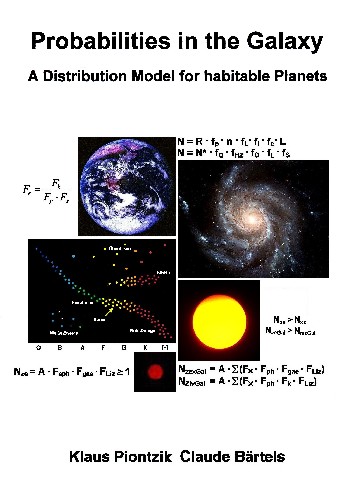| According to sentence 3.3.1, 9,600
- 289,000 "Earths 2" exist in our
galaxy. At 9,600 "Earths 2", the mean distance is 1,378 light-years. That would also be the maximum mean distance to another civilization. With SETI, only a space of about 55 light years was recorded. So we would have to send at least 1,323 more years or wait for the answer in 2,701 years. At 289,000 "Earths 2", the minimum mean distance is 443 light-years. In this case we would have to send or wait at least 388 years and in 831 years we would have the answer. Overall, we would have to search on average between 831 to 2,701 years with SETI and wait until we would receive an answer. As a consequence, what tremendous luck one has to have in order to find extraterrestrial civilizations with the SETI project. According to sentence 8.3.5, a maximum of 1 million "Earths 2" could exist in our galaxy. The mean distance between the planets is 293 light years. In that case we would have to send at least 238 more years and wait and in 531 years we would have the answer. As a consequence, signals from extraterrestrial intelligences are not expected to be recorded via the SETI project in the next decades. |

|
176 sides, of them 64 in Color 76 pictures 11 tables Production and publishing: Books on Demand GmbH, Norderstedt ISBN 9-783-7528-5524-1 Price: 22 Euro |
|